N.B.: The careers and influence of these eight peacemakers were interrelated throughout the 20th century. All eight grappled with epic problems such as war, the Great Depression, racial segregation, consumerism, and social justice. They promoted various peace-making solutions, e.g. the arts and crafts movement, communalism, decentralization, homesteading, land reform, low-cost housing, non-violence, organic foods, pacifism, progressive education, racial integration, self-reliance, small-scale agriculture, and organized war resistance.
This web page shows the physical and permanent monuments which preserve their memory, including museums and office buildings.
It does not attempt to document their long and distinguished careers and many personal interrelationships.
Click each of the eight names shown above for an individual biography.
Click here for summary biographies of these and many other famous communitarians.
Click here for monuments related to other Quaker peacemakers.
Click here for monuments related to other Nobel Peace Prize laureates.
Click here for these & many other notable communitarians in birth order.
Right click image to enlarge.
 August 5, 1854 - Birth of Bolton Hall [1854-1938] in Ireland.
August 5, 1854 - Birth of Bolton Hall [1854-1938] in Ireland.

 December 28, 1859 - Birth of Frank Stephens [1859-1935] in Rahway, New Jersey (USA).
December 28, 1859 - Birth of Frank Stephens [1859-1935] in Rahway, New Jersey (USA).

 June 20, 1878 - Birth of Arthur Ernest Morgan [1878-1975] near Cincinatti, Ohio (USA).
June 20, 1878 - Birth of Arthur Ernest Morgan [1878-1975] near Cincinatti, Ohio (USA).

 1884 - Birth of Clarence E. Pickett [1884-1965] in Kansas (USA).
1884 - Birth of Clarence E. Pickett [1884-1965] in Kansas (USA).
 January 8, 1885 - Birth of A. J. Muste [1885-1967] in Zierikzee, Zeeland (Netherlands).
January 8, 1885 - Birth of A. J. Muste [1885-1967] in Zierikzee, Zeeland (Netherlands).

 1886 - Birth of Ralph Borsodi [1886-1977] in New York City, New York (USA).
1886 - Birth of Ralph Borsodi [1886-1977] in New York City, New York (USA).
 |  Late 1886 - Topolobampo Cooperative Colony, Topolobampo Bay, near
Los Mochis, Sinaloa (Mexico). Founded by Albert Kimsey Owen [1847-1916] & a group of American colonists inspired by Henry George. "Owen arranged to purchase 111,000 acres from a local hacienda owner, & -- with the help of Mexican president Porfirio Diaz -- obtained concessions for a railroad & for the colony. He then chartered a corporation, Credit Foncier, in New Jersey.
People buying Credit Foncier stock received the right to join the colony, which was to be run communally & without the use of money. Work was assigned according to each person's ability, with credits awarded for labor. Individual accumulation of wealth was prohibited. Eight hours of work, eight hours of sleep & eight hours of culture or entertainment made up the daily routine. Colonists would build, own & operate the railroad, telegraphs, banks & water supply. Capital gained would be reinvested in the colony's infrastructure.
Credit Foncier clubs sprang up in the USA & Europe. In late 1886, the first 27 colonists arrived from California, & within a short time the population grew to 2,000." Late 1886 - Topolobampo Cooperative Colony, Topolobampo Bay, near
Los Mochis, Sinaloa (Mexico). Founded by Albert Kimsey Owen [1847-1916] & a group of American colonists inspired by Henry George. "Owen arranged to purchase 111,000 acres from a local hacienda owner, & -- with the help of Mexican president Porfirio Diaz -- obtained concessions for a railroad & for the colony. He then chartered a corporation, Credit Foncier, in New Jersey.
People buying Credit Foncier stock received the right to join the colony, which was to be run communally & without the use of money. Work was assigned according to each person's ability, with credits awarded for labor. Individual accumulation of wealth was prohibited. Eight hours of work, eight hours of sleep & eight hours of culture or entertainment made up the daily routine. Colonists would build, own & operate the railroad, telegraphs, banks & water supply. Capital gained would be reinvested in the colony's infrastructure.
Credit Foncier clubs sprang up in the USA & Europe. In late 1886, the first 27 colonists arrived from California, & within a short time the population grew to 2,000."
|

|   October 29, 1897 - Death of Henry George, New York City, New York (USA). "An estimated 100,000 people (more people than at any other funeral in US history except for that of President Abraham Lincoln) attended his funeral on Sunday, October 30, 1897, where the Reverend Lyman Abbott delivered an address." Buried in Green-Wood Cemetery, Brooklyn, New York City, New York (USA). October 29, 1897 - Death of Henry George, New York City, New York (USA). "An estimated 100,000 people (more people than at any other funeral in US history except for that of President Abraham Lincoln) attended his funeral on Sunday, October 30, 1897, where the Reverend Lyman Abbott delivered an address." Buried in Green-Wood Cemetery, Brooklyn, New York City, New York (USA).
|

|   Date? - "Ghost Sign" for Henry George Brand Cigars, Main Street (north side), Mt. Pleasant, Utah (USA). Above the "Center of Utah" plaque. Date? - "Ghost Sign" for Henry George Brand Cigars, Main Street (north side), Mt. Pleasant, Utah (USA). Above the "Center of Utah" plaque. | 
|

 January 5, 1900 - Birth of Mildred Jansen [1900-1992] on a farm near Blair, Nebraska (USA). Married John Loomis in 1940. He died in 1968.
January 5, 1900 - Birth of Mildred Jansen [1900-1992] on a farm near Blair, Nebraska (USA). Married John Loomis in 1940. He died in 1968.

|   1900 - Arden Communities, Arden, Ardencroft & Ardentown, New Castle County, Delaware (USA). Georgist community. "Fouunded by sculptor Frank Stephens [1859-1935] and architect Will Price [1861-1916], based on ideas such as Henry George's single tax, William Morris’s Arts and Crafts movement, and Peter Kropotkin's communal living principles." Now three legally separate municipalities. The name "Arden" is from Shakespeare, and Arden still supports a Shakespeare Gild. Subsequent home of a number of famous artists and peacemakers, e.g. Scott Nearing, Upton Sinclair and Ella Reeve Bloor. Click here for Wikipedia article. 1900 - Arden Communities, Arden, Ardencroft & Ardentown, New Castle County, Delaware (USA). Georgist community. "Fouunded by sculptor Frank Stephens [1859-1935] and architect Will Price [1861-1916], based on ideas such as Henry George's single tax, William Morris’s Arts and Crafts movement, and Peter Kropotkin's communal living principles." Now three legally separate municipalities. The name "Arden" is from Shakespeare, and Arden still supports a Shakespeare Gild. Subsequent home of a number of famous artists and peacemakers, e.g. Scott Nearing, Upton Sinclair and Ella Reeve Bloor. Click here for Wikipedia article.
|


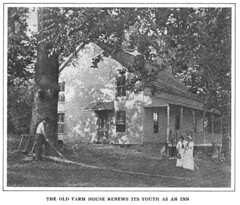
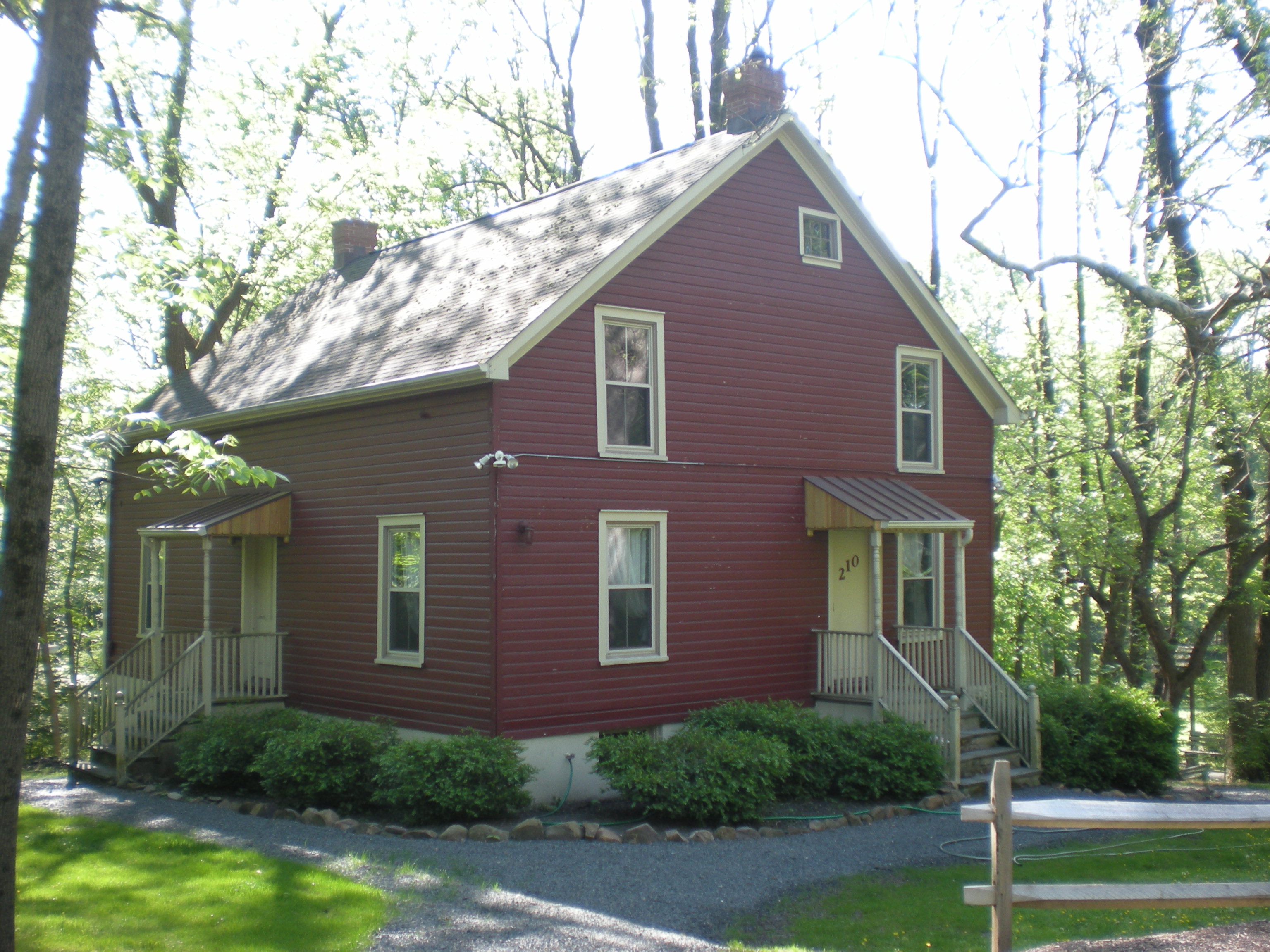

|   1910 - Free Acres Community, Berkeley Heights, New Jersey (USA). Single-tax community 30 miles west of New York City. Founded on principles of Henry George by Bolton Hall [1854-1938], originator of the back-to-the-land movement. Upper left image is old postcard showing entrance to Free Acres. Upper right image is map drawn in 1939. Lower left image is earliest known photo of the Farm House (from an article by Hall
in a 1911 issue of "The Independent." During the 1930's, the entire building was raised several feet, and the basement with its increased headroom became "Frank Stephens Hall" where meetings & parties take place. Lower right image shows the Farm House today. The upper part is mostly vacant & used for records storage, although the room which housed the original Children's' Library is still intact. /// Frank Stephens [1859–1953] was an American sculptor, political activist & co-founder of the utopian single-tax community in Arden, Delaware (qv). 1910 - Free Acres Community, Berkeley Heights, New Jersey (USA). Single-tax community 30 miles west of New York City. Founded on principles of Henry George by Bolton Hall [1854-1938], originator of the back-to-the-land movement. Upper left image is old postcard showing entrance to Free Acres. Upper right image is map drawn in 1939. Lower left image is earliest known photo of the Farm House (from an article by Hall
in a 1911 issue of "The Independent." During the 1930's, the entire building was raised several feet, and the basement with its increased headroom became "Frank Stephens Hall" where meetings & parties take place. Lower right image shows the Farm House today. The upper part is mostly vacant & used for records storage, although the room which housed the original Children's' Library is still intact. /// Frank Stephens [1859–1953] was an American sculptor, political activist & co-founder of the utopian single-tax community in Arden, Delaware (qv).
|
 August 16, 1911 - Birth of E. F. Schumacher [1911-1977] in Bonn (Germany).
August 16, 1911 - Birth of E. F. Schumacher [1911-1977] in Bonn (Germany).
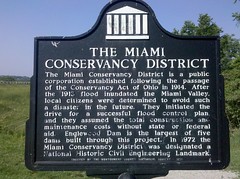
 

|   1914 - Miami Conservancy District (MCD), Dayton, Ohio (USA). Created by engineer Arthur Morgan [1878-1975] to protect the city and the surrounding area after the disasterous Great Dayton Flood of 1913. During the construction of five MCD dams, Morgan organized model workers communities. Left image show sign at the entrance to the Englewood reserve. It explains the history of the Englewood Dam which was constructed by the Miami Conservancy District in 1922. 1914 - Miami Conservancy District (MCD), Dayton, Ohio (USA). Created by engineer Arthur Morgan [1878-1975] to protect the city and the surrounding area after the disasterous Great Dayton Flood of 1913. During the construction of five MCD dams, Morgan organized model workers communities. Left image show sign at the entrance to the Englewood reserve. It explains the history of the Englewood Dam which was constructed by the Miami Conservancy District in 1922.
|

 March 1918 - Birth of Robert Swann [1918-2003] Cleveland Heights, Ohio (USA).
March 1918 - Birth of Robert Swann [1918-2003] Cleveland Heights, Ohio (USA).
 |   1924 - Dogwoods Homestead, Suffern, New York (USA). Replaced "Seven Acres," Borsodi's first family "homestead." Ralph Borsodi [1886-1977]: "In 1924 we bought 18 acres-which we named Dogwoods after the beautiful trees on the land-and developed it into an even more satisfying place to live. I built quite a formidable home and three other buildings there from the natural rocks we found on the property." Borsodi sold Dogwoods to anarchist Lawrence (Larry) Labadie [1898-1975] who lived on the grounds from 1950 until his death in 1975. 1924 - Dogwoods Homestead, Suffern, New York (USA). Replaced "Seven Acres," Borsodi's first family "homestead." Ralph Borsodi [1886-1977]: "In 1924 we bought 18 acres-which we named Dogwoods after the beautiful trees on the land-and developed it into an even more satisfying place to live. I built quite a formidable home and three other buildings there from the natural rocks we found on the property." Borsodi sold Dogwoods to anarchist Lawrence (Larry) Labadie [1898-1975] who lived on the grounds from 1950 until his death in 1975.
|




|   1929 - Glen Helen Ecology Institute, Antioch College, Yellow Springs, Ohio (USA). "Arthur Morgan (president of Antioch College 1920-1936) and his wife Lucy Griscom Morgan cultivate Hugh Taylor Birch [1848-1943], who achieved great wealth working for Standard Oil. Birch's favorite memory of Yellow Springs was his time spent in the Glen, and consequently he buys it all, donating it to the College in memory of his daughter Helen." 1929 - Glen Helen Ecology Institute, Antioch College, Yellow Springs, Ohio (USA). "Arthur Morgan (president of Antioch College 1920-1936) and his wife Lucy Griscom Morgan cultivate Hugh Taylor Birch [1848-1943], who achieved great wealth working for Standard Oil. Birch's favorite memory of Yellow Springs was his time spent in the Glen, and consequently he buys it all, donating it to the College in memory of his daughter Helen."
|

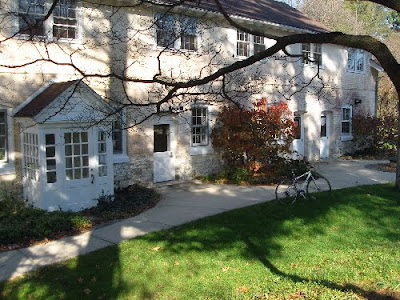

|   1930 - Pendle Hill, 338 Plush Mill Road, Wallingford, Pennsylvania (USA). "A Quaker center for spiritual growth, study and service. At Pendle Hill, students and staff live, work, worship and study together. First director was Henry Theodore Hodgkin [1876-1933] who founded the Fellowship of Reconcilation (FOR) in 1914 in UK and in 1915 in US. Clarence Pickett and Homer Morris lived in houses on the Pendle Hill grounds. Pickett was general secretary of the American Friends Service Committee [1929-1950] and chief of "Stranded Mining and Industrial Populations" for the federal government [in the mid-1930's]. 1930 - Pendle Hill, 338 Plush Mill Road, Wallingford, Pennsylvania (USA). "A Quaker center for spiritual growth, study and service. At Pendle Hill, students and staff live, work, worship and study together. First director was Henry Theodore Hodgkin [1876-1933] who founded the Fellowship of Reconcilation (FOR) in 1914 in UK and in 1915 in US. Clarence Pickett and Homer Morris lived in houses on the Pendle Hill grounds. Pickett was general secretary of the American Friends Service Committee [1929-1950] and chief of "Stranded Mining and Industrial Populations" for the federal government [in the mid-1930's].
|
 |   January 1933 - Liberty Homesteads, Dayton, Ohio (USA). "Ralph Borsodi was in charge of a homestead unit sponsored by the Dayton Council of Social Agencies [DCSA]... About four miles west of Dayton, 160 acres was acquired with farm buildings to be owned in common by the community and individual plots leased to homesteaders. It was Borsodi's plan to ring Dayton with such communities. Ten homes had been built by January of 1935, some of which had faulty construction. The project was terminated, and the land was sold." Elizabeth Nutting was secretary of the "Characer Building Section" of the DCSA. Mildred Loomis saw homesteaders vote against Borsodi to accept fenderal control. Click here for a detailed history. January 1933 - Liberty Homesteads, Dayton, Ohio (USA). "Ralph Borsodi was in charge of a homestead unit sponsored by the Dayton Council of Social Agencies [DCSA]... About four miles west of Dayton, 160 acres was acquired with farm buildings to be owned in common by the community and individual plots leased to homesteaders. It was Borsodi's plan to ring Dayton with such communities. Ten homes had been built by January of 1935, some of which had faulty construction. The project was terminated, and the land was sold." Elizabeth Nutting was secretary of the "Characer Building Section" of the DCSA. Mildred Loomis saw homesteaders vote against Borsodi to accept fenderal control. Click here for a detailed history.
|


 |   1933 - Norris, Norris, Tennessee (USA). Built by the Tennessee Valley Authority (TVA) under Arthur Morgan as one of several model communities for TVA workers. The city and nearby TVA dam are named for George W. Norris [1861-1944], Senator from Nebraska. Norris now has a museum adjacent to the Norris Community Library. Arthur Morgan lived in Norris while his wife Lucy promoted pottery and other local crafts and he, David A. Lilienthal [1899-1981], and Harcourt A. Morgan (no relation) directed TVA from offices in nearby Knoxville, Tennessee. 1933 - Norris, Norris, Tennessee (USA). Built by the Tennessee Valley Authority (TVA) under Arthur Morgan as one of several model communities for TVA workers. The city and nearby TVA dam are named for George W. Norris [1861-1944], Senator from Nebraska. Norris now has a museum adjacent to the Norris Community Library. Arthur Morgan lived in Norris while his wife Lucy promoted pottery and other local crafts and he, David A. Lilienthal [1899-1981], and Harcourt A. Morgan (no relation) directed TVA from offices in nearby Knoxville, Tennessee.
|
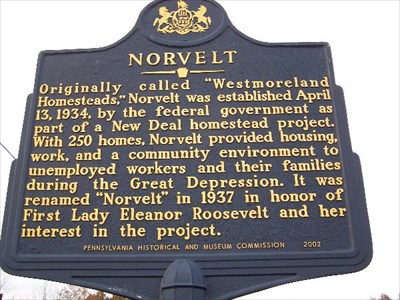 |   April 1934 - Norvelt, Westmoreland County, Pennsylvania (USA). One of five "stranded communities" built by the federal Division of Subsistence Homesteads during the Great Depression. Text of historical marker: "Originally called 'Westmoreland Homesteads,' Norvelt was established April 13, 1934, by the federal government as part of a New Deal homestead project. With 250 homes, Norvelt provided housing, work, and a community environment to unemployed workers and their families during the Great Depression. It was renamed “Norvelt" in 1937 in honor of First Lady Eleanor Roosevelt and her interest in the project." April 1934 - Norvelt, Westmoreland County, Pennsylvania (USA). One of five "stranded communities" built by the federal Division of Subsistence Homesteads during the Great Depression. Text of historical marker: "Originally called 'Westmoreland Homesteads,' Norvelt was established April 13, 1934, by the federal government as part of a New Deal homestead project. With 250 homes, Norvelt provided housing, work, and a community environment to unemployed workers and their families during the Great Depression. It was renamed “Norvelt" in 1937 in honor of First Lady Eleanor Roosevelt and her interest in the project."
|



|   1934 - Cumberland Homesteads, Crossville (Tennessee). One of five "stranded communities" built by the federal Division of Subsistence Homesteads during the Great Depression. "New Deal Community built by the between 1934 and 1938." Houses designed by William Macy Stanton [1888-1969], the same Quaker architect from Philadelphia who worked previously for Arthur Morgan at Norris, Tennessee. Now has Homesteads Tower Museum and an original homestead home (at 2611 Pigeon Ridge Road) whch has been restored to its authentic 1930's condition.. 1934 - Cumberland Homesteads, Crossville (Tennessee). One of five "stranded communities" built by the federal Division of Subsistence Homesteads during the Great Depression. "New Deal Community built by the between 1934 and 1938." Houses designed by William Macy Stanton [1888-1969], the same Quaker architect from Philadelphia who worked previously for Arthur Morgan at Norris, Tennessee. Now has Homesteads Tower Museum and an original homestead home (at 2611 Pigeon Ridge Road) whch has been restored to its authentic 1930's condition..
|

 |   June 23, 1935 - Bayard Lane Community, Suffren (New York). 16 family homesteads, on a 40 acre plot, founded by Ralph Borsodi and owned by the Independence Foundation Inc. of which Clarence Pickett was a trustee. Click here for Wikipedia article. Home of missionaries Ralph P. Templin [1913-1994] and Paul Keene [1910-2005] after they were expelled from British India for working too closely with Gandhi. A Bayard Lane historical marker exists but is not shown here. June 23, 1935 - Bayard Lane Community, Suffren (New York). 16 family homesteads, on a 40 acre plot, founded by Ralph Borsodi and owned by the Independence Foundation Inc. of which Clarence Pickett was a trustee. Click here for Wikipedia article. Home of missionaries Ralph P. Templin [1913-1994] and Paul Keene [1910-2005] after they were expelled from British India for working too closely with Gandhi. A Bayard Lane historical marker exists but is not shown here.
|
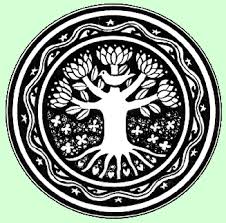
 |   1936 - School of Living (SoL), Bayard Lane Community, Suffern, New York (USA). Occupied a 4-acre tract at Bayard Lane. Home of organic gardening in the United States. Later moved to Ohio under Mildred Loomis, then to Pennsylvania. Today SoL is an association of five land trust communities in Pensylvania, Maryland & Virginia. SoL publishes the journal Green Revolution. 1936 - School of Living (SoL), Bayard Lane Community, Suffern, New York (USA). Occupied a 4-acre tract at Bayard Lane. Home of organic gardening in the United States. Later moved to Ohio under Mildred Loomis, then to Pennsylvania. Today SoL is an association of five land trust communities in Pensylvania, Maryland & Virginia. SoL publishes the journal Green Revolution.
|

 |   November 8, 1991 - Penn Craft Community, Fayette County (Pennsylvania). Founded by the American Friends Service Committee (AFSC) under Clarence Pickett and Homer Morris. Text of marker: "This experimental community for coal miners unemployed during the Depression was developed, 1937-43, by the American Friends Service Committee (AFSC). On the 200-acre tract, fifty families built their stone houses, a cooperative store, and a knitting factory. A model for other self-help projects elsewhere, Penn-Craft was a successful example of the back-to-the-land movement of the 1930s." November 8, 1991 - Penn Craft Community, Fayette County (Pennsylvania). Founded by the American Friends Service Committee (AFSC) under Clarence Pickett and Homer Morris. Text of marker: "This experimental community for coal miners unemployed during the Depression was developed, 1937-43, by the American Friends Service Committee (AFSC). On the 200-acre tract, fifty families built their stone houses, a cooperative store, and a knitting factory. A model for other self-help projects elsewhere, Penn-Craft was a successful example of the back-to-the-land movement of the 1930s."
|




|   October 10, 1987 - Van Houten Fields Historical marker, West Nyack, near Suffern, Rockland County (New York). Text of Marker: "In 1937 Ralph Borsodi, author, economist, and philosopher, organized a group for the purchase of this 106 acre Dutch farm to be divided into leased acreage plots. This became the largest self-administered back-to-the-land community in Rockland county for people seeking a do-it-yourself agrarian life style. The homesteads were built in part by the owners. The leased land later reverted to private ownership." Click here for history of Borsodi's School of Living (SOL). October 10, 1987 - Van Houten Fields Historical marker, West Nyack, near Suffern, Rockland County (New York). Text of Marker: "In 1937 Ralph Borsodi, author, economist, and philosopher, organized a group for the purchase of this 106 acre Dutch farm to be divided into leased acreage plots. This became the largest self-administered back-to-the-land community in Rockland county for people seeking a do-it-yourself agrarian life style. The homesteads were built in part by the owners. The leased land later reverted to private ownership." Click here for history of Borsodi's School of Living (SOL).
|
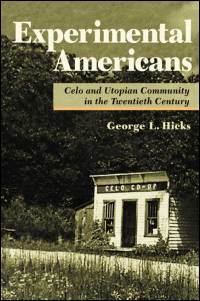
 |   1937 - Celo Community, 7965 White Oak Road, Burnsville (North Carolina). Founded by Arthur Morgan, Clarence Pickett & Henry Regnery [1912-1996]. Arthur Morgan visited conscientious objector camps during World War II, after which several CO's moved to Celo & created a Friends Meeting House on the grounds. Image is Celo Co-op building on cover of "Experimental Americans: Celo & Utopian Community in the Twentieth Century" by George L. Hicks. 1937 - Celo Community, 7965 White Oak Road, Burnsville (North Carolina). Founded by Arthur Morgan, Clarence Pickett & Henry Regnery [1912-1996]. Arthur Morgan visited conscientious objector camps during World War II, after which several CO's moved to Celo & created a Friends Meeting House on the grounds. Image is Celo Co-op building on cover of "Experimental Americans: Celo & Utopian Community in the Twentieth Century" by George L. Hicks.
|



|   1940 - Bryn Gweled Homesteads, Southampton, Bucks County, Pennsylvania (USA). Intentional community founded with assistance of Ralph Borsodi. "Bryn Gweled" means "Hill of Vision" in Welsh, a reference to Pendle Hill where Quaker founder George Fox [1624-1669] had a vision in 1652. Name suggestred by Bryn Gweled member John Pease Hodgkin [1909-1994], son of Henry Theodore Hodgkin. 1940 - Bryn Gweled Homesteads, Southampton, Bucks County, Pennsylvania (USA). Intentional community founded with assistance of Ralph Borsodi. "Bryn Gweled" means "Hill of Vision" in Welsh, a reference to Pendle Hill where Quaker founder George Fox [1624-1669] had a vision in 1652. Name suggestred by Bryn Gweled member John Pease Hodgkin [1909-1994], son of Henry Theodore Hodgkin.
|   About 1947 - Tanguy Homesteads, Twin Pine Way, Glen Mills, Delaware County, Pennlysvania (USA). Sister community of Bryn Gweled Homesteads (qv). Organized by Mary Ellicott Arnold [1876-1968]. Has about 30 "homesteads." About 1947 - Tanguy Homesteads, Twin Pine Way, Glen Mills, Delaware County, Pennlysvania (USA). Sister community of Bryn Gweled Homesteads (qv). Organized by Mary Ellicott Arnold [1876-1968]. Has about 30 "homesteads."
|
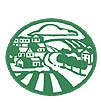


|   1940 - Community Service Inc. (CSI), Yellow Springs (Ohio). Now called "The Community Solution." Founded by Arthur Morgan who presided over a CSI meeting attended by Pendle Hill, Celo, Bryn Grwled and other communities in 1948 at which the phrase "intentional community" was coined, leading to the creation of the Fellowship of Intentional Community (FIC), the Homer Morris Loan Fund, and the Community Educational Service Council, Inc.(CESCI). 1940 - Community Service Inc. (CSI), Yellow Springs (Ohio). Now called "The Community Solution." Founded by Arthur Morgan who presided over a CSI meeting attended by Pendle Hill, Celo, Bryn Grwled and other communities in 1948 at which the phrase "intentional community" was coined, leading to the creation of the Fellowship of Intentional Community (FIC), the Homer Morris Loan Fund, and the Community Educational Service Council, Inc.(CESCI).
|
1944 - Arthur Morgan writes "Plagiarism in Utopia: A study of the continuity of the Utopian tradition with special reference to Edward Bellamy's 'Looking Backward.'"
 |   March 1946 - Walnut Acres, Penns Creek (Pennsylvania). Organic farm founded by Paul Keene [1910-2005] & his wife Betty after working at Ralph Borsodi's School of Living in Suffren, NY. /// Now a corporatre brand with the following "who we are" on its website: " Walnut Acres is America's first organic food company.
We've been producing delicious organic foods since 1946. True to our beginnings, we make organic foods & beverages that nourish your body and invigorate your soul. We understand that despite the hectic pace of life you are committed to healthy living & enjoyment of delicious food. So we continue to create tasty & convenient organic foods & strive to make them available wherever you chose to shop." Click here for an obituary of Paul Keene. March 1946 - Walnut Acres, Penns Creek (Pennsylvania). Organic farm founded by Paul Keene [1910-2005] & his wife Betty after working at Ralph Borsodi's School of Living in Suffren, NY. /// Now a corporatre brand with the following "who we are" on its website: " Walnut Acres is America's first organic food company.
We've been producing delicious organic foods since 1946. True to our beginnings, we make organic foods & beverages that nourish your body and invigorate your soul. We understand that despite the hectic pace of life you are committed to healthy living & enjoyment of delicious food. So we continue to create tasty & convenient organic foods & strive to make them available wherever you chose to shop." Click here for an obituary of Paul Keene.
|
 |   1947 - Parkwyn Village, Kalamazoo, Michigan (USA). Cluster of "Usonian" homes designed by Frank Lloyd Wright. Robert Swann [1918-2003] worked on the project as a laborer (after being a conscientious objector during World War II). Click here for Swann's autobiography. 1947 - Parkwyn Village, Kalamazoo, Michigan (USA). Cluster of "Usonian" homes designed by Frank Lloyd Wright. Robert Swann [1918-2003] worked on the project as a laborer (after being a conscientious objector during World War II). Click here for Swann's autobiography.
|
 |   c.1948 - Melbourne Village, Brevard County, Florida (USA). Modeled by Ralph Borsodi, Dr. Elizabeth Nutting, Margaret Hutchinson and Virginia Wood on Liberty Acres [sic], their previous project in Dayton, Ohio. Developed by the American Homesteading Foundation (AHF), an Ohio corporation. Borsodi operated a School of Living here from 1948 to 1952 and the "University of Melbourne" from 1955 to 1958. The latter is now part of the Florida Institute of Technology (FIT) near the Kennedy Space Center. c.1948 - Melbourne Village, Brevard County, Florida (USA). Modeled by Ralph Borsodi, Dr. Elizabeth Nutting, Margaret Hutchinson and Virginia Wood on Liberty Acres [sic], their previous project in Dayton, Ohio. Developed by the American Homesteading Foundation (AHF), an Ohio corporation. Borsodi operated a School of Living here from 1948 to 1952 and the "University of Melbourne" from 1955 to 1958. The latter is now part of the Florida Institute of Technology (FIT) near the Kennedy Space Center.
|

 July 1948 - Peacemakers,
Chicago?, Illinois (USA).
"An American pacifist organization. The name of the group was taken from a section of the Bible, the Beatitudes or Sermon on the Mount: 'Blessed are the peacemakers, for they will be called children of God.'
The group was founded following a conference on 'More Disciplined and Revolutionary Pacifist Activity' in Chicago in July 1948 to advocate nonviolent resistance in the service of peace, particularly draft resistance and tax resistance. The group’s members vowed:
(1) to refuse to serve in the armed forces in either peace or war; (2) to refuse to make or transport weapons of war; (3) to refuse to be conscripted or to register; (4) to consider to refuse to pay taxes for war purposes — a position already adopted by some; (5) to spread the idea of peacemaking and to develop non-violent methods of opposing war through various forms of non-cooperation and to advocate unilateral disarmament and economic democracy.
The group was organized largely by Ernest & Marion Bromley and Juanita & Wally Nelson. Among the organization’s other founders were A.J. Muste, Dwight Macdonald, Ralph T. Templin, Roy Kepler, Cecil Hinshaw, Milton Mayer, Bayard Rustin and Horace Champney. Many members came from the Committee for Nonviolent Revolution [CNRV], which had been formed two years before.
The 'Tax Refusal Committee' of Peacemakers is credited for founding the modern American war tax resistance movement. Peacemakers published the first guide to war tax resistance in 1963.
Peacemakers differed from other pacifist and nonviolent resistance organizations in its emphasis on small-scale, local, 'cell;-based organization & intentional communities."
July 1948 - Peacemakers,
Chicago?, Illinois (USA).
"An American pacifist organization. The name of the group was taken from a section of the Bible, the Beatitudes or Sermon on the Mount: 'Blessed are the peacemakers, for they will be called children of God.'
The group was founded following a conference on 'More Disciplined and Revolutionary Pacifist Activity' in Chicago in July 1948 to advocate nonviolent resistance in the service of peace, particularly draft resistance and tax resistance. The group’s members vowed:
(1) to refuse to serve in the armed forces in either peace or war; (2) to refuse to make or transport weapons of war; (3) to refuse to be conscripted or to register; (4) to consider to refuse to pay taxes for war purposes — a position already adopted by some; (5) to spread the idea of peacemaking and to develop non-violent methods of opposing war through various forms of non-cooperation and to advocate unilateral disarmament and economic democracy.
The group was organized largely by Ernest & Marion Bromley and Juanita & Wally Nelson. Among the organization’s other founders were A.J. Muste, Dwight Macdonald, Ralph T. Templin, Roy Kepler, Cecil Hinshaw, Milton Mayer, Bayard Rustin and Horace Champney. Many members came from the Committee for Nonviolent Revolution [CNRV], which had been formed two years before.
The 'Tax Refusal Committee' of Peacemakers is credited for founding the modern American war tax resistance movement. Peacemakers published the first guide to war tax resistance in 1963.
Peacemakers differed from other pacifist and nonviolent resistance organizations in its emphasis on small-scale, local, 'cell;-based organization & intentional communities."

|   1950 - The Vale Community, Yellow Springs, Ohio (USA). 20-acre intentional community founded by Arthur Morgan's son Griscom and his wife Jane Moore Morgan [1918-2007]. "Began in 1946 when Jane & Griscom Morgan invited a family to share their home on 40 acres of land two miles south of Yellow Springs. In 1950 the second house was built and more followed. Now there are 11 homes & 20 members. The group incorporated as The Vale in 1960. Gris & Jane felt strongly that land should be shared, and not used as a commodity, so in 1980 they donated the land to the Community Service, Inc. Land Trust, from which it is leased by The Vale. Seventeen of its wooded acres were put into a conservation easement, so they would never be built upon." 1950 - The Vale Community, Yellow Springs, Ohio (USA). 20-acre intentional community founded by Arthur Morgan's son Griscom and his wife Jane Moore Morgan [1918-2007]. "Began in 1946 when Jane & Griscom Morgan invited a family to share their home on 40 acres of land two miles south of Yellow Springs. In 1950 the second house was built and more followed. Now there are 11 homes & 20 members. The group incorporated as The Vale in 1960. Gris & Jane felt strongly that land should be shared, and not used as a commodity, so in 1980 they donated the land to the Community Service, Inc. Land Trust, from which it is leased by The Vale. Seventeen of its wooded acres were put into a conservation easement, so they would never be built upon."
|
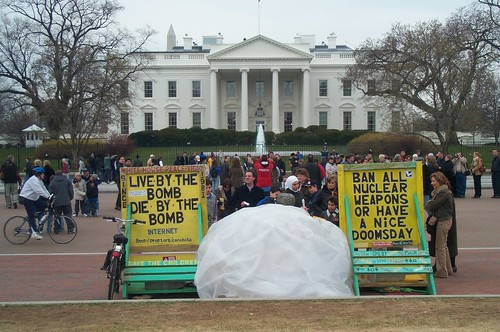


|   April 29, 1962 - White House, Washigton, DC (USA). On the same day, Clarence E. Pickett and his wife Lilly protest outside the White House against the nuclear arms race and are received inside the White House at a reception for all Nobel Prize winners from the US and Canada.. The American Friends Service Committee's Nobel medal is presumably on permanent display at AFSC headquarters in Philadelphia, Pennsylvania. April 29, 1962 - White House, Washigton, DC (USA). On the same day, Clarence E. Pickett and his wife Lilly protest outside the White House against the nuclear arms race and are received inside the White House at a reception for all Nobel Prize winners from the US and Canada.. The American Friends Service Committee's Nobel medal is presumably on permanent display at AFSC headquarters in Philadelphia, Pennsylvania.
|
NB: The following account is from the autobiography of Robert Swann [1918-2003]:



| T
R
IM
A
R
A
N |   1962 - "Everyman," Sausalito, California (USA). "In 1962 the US announced another round of nuclear tests in the Pacific. We decided to build a 30-foot trimaran sailboat designed by Arthur Piver [1910-1968] and sail it into the testing zone. The US Attorney in San Francisco decided to try to stop us by issuing a 'cease and desist' order. The "Everyman" sailed serenely out under the Bay Bridge [sic] and into ocean waters with a crew of three. Following the boat was a Coast Guard cutter with a US Marshall. Hovering above it all were several helicopters, also with reporters and photographers. All of this was being carried on local radio and TV news so that practically everyone in the San Francisco area was aware of the story. Eventually, with the help of the Coast Guard, he managed to arrest and handcuff the crew and return them to San Francisco. I was also arrested and spent the night in the San Francisco jail [sic] along with the sailors. Meanwhile, the word had gone out. Hundreds of supporters arrived at the Federal courthouse where we were being held. They filled the entire building before closing time, refusing to leave when ordered to do so. We turned our night in jail into a party. Joan Baez lead the singing and we danced all night long. The next day the Feds dropped the case against me but charged the three sailors, who spent a couple of months in jail." (Image shows Arthur Piver's 30-foot "Nimble" built in 1969 in the UK. Piver left Sausalito alone in his 36-foot trimaran on March 17, 1968, en route to San Diego and was never seen again.) 1962 - "Everyman," Sausalito, California (USA). "In 1962 the US announced another round of nuclear tests in the Pacific. We decided to build a 30-foot trimaran sailboat designed by Arthur Piver [1910-1968] and sail it into the testing zone. The US Attorney in San Francisco decided to try to stop us by issuing a 'cease and desist' order. The "Everyman" sailed serenely out under the Bay Bridge [sic] and into ocean waters with a crew of three. Following the boat was a Coast Guard cutter with a US Marshall. Hovering above it all were several helicopters, also with reporters and photographers. All of this was being carried on local radio and TV news so that practically everyone in the San Francisco area was aware of the story. Eventually, with the help of the Coast Guard, he managed to arrest and handcuff the crew and return them to San Francisco. I was also arrested and spent the night in the San Francisco jail [sic] along with the sailors. Meanwhile, the word had gone out. Hundreds of supporters arrived at the Federal courthouse where we were being held. They filled the entire building before closing time, refusing to leave when ordered to do so. We turned our night in jail into a party. Joan Baez lead the singing and we danced all night long. The next day the Feds dropped the case against me but charged the three sailors, who spent a couple of months in jail." (Image shows Arthur Piver's 30-foot "Nimble" built in 1969 in the UK. Piver left Sausalito alone in his 36-foot trimaran on March 17, 1968, en route to San Diego and was never seen again.)
|


|   1967 - New Communities, Albany, Georgia (USA). First community land trust (CLT) in the United States. An attempt by Ralph Borsodi and Robert Swann to "assist some 500 African-American families to resettle a 5000 acre tract on a lease-hold, trust holding, common possession pattern." "Inspired by Borsodi's work with J. P. Narayan [1902-1979] and Vinoba Bhave [1895-1982], both disciples of Gandhi." 1967 - New Communities, Albany, Georgia (USA). First community land trust (CLT) in the United States. An attempt by Ralph Borsodi and Robert Swann to "assist some 500 African-American families to resettle a 5000 acre tract on a lease-hold, trust holding, common possession pattern." "Inspired by Borsodi's work with J. P. Narayan [1902-1979] and Vinoba Bhave [1895-1982], both disciples of Gandhi."
|


|   1973 - Institute for Community Economics (ICE), 1101 30th Street, NW (Suite 400),
Washington, DC (USA). Founded by Robert Swann. Promotes community land trusts (CLT's). Moved to Washington, DC, from Connecticut. Website says founded in 1967 (referring to New Communities?). 1973 - Institute for Community Economics (ICE), 1101 30th Street, NW (Suite 400),
Washington, DC (USA). Founded by Robert Swann. Promotes community land trusts (CLT's). Moved to Washington, DC, from Connecticut. Website says founded in 1967 (referring to New Communities?).
|

|   1975 - Morgan Stone, Glen Helen, Antioch College, Yellow Springs, Ohio (USA). Where Arthur and Lucy Morgan's ashes are enterred. 1975 - Morgan Stone, Glen Helen, Antioch College, Yellow Springs, Ohio (USA). Where Arthur and Lucy Morgan's ashes are enterred.
|



|   1978 - Peace Pentagon (Muste Building), A.J. Muste Memorial Institute, 339 Lafayette Street, New York City, New York (USA). Organized in 1974 to carry forward the commitment of A. J. Muste [1885-1967] to nonviolent radical change, the institute bought the "Peace Pentagon" office building in 1978 to provide a stable and affordable base for itself and other activist groups in New York City, e.g. the War Resisters League (WRL). Now in need of major repairs and in danger of being sold. Click here for "Save the Peace Pentagon." 1978 - Peace Pentagon (Muste Building), A.J. Muste Memorial Institute, 339 Lafayette Street, New York City, New York (USA). Organized in 1974 to carry forward the commitment of A. J. Muste [1885-1967] to nonviolent radical change, the institute bought the "Peace Pentagon" office building in 1978 to provide a stable and affordable base for itself and other activist groups in New York City, e.g. the War Resisters League (WRL). Now in need of major repairs and in danger of being sold. Click here for "Save the Peace Pentagon."
|

|   1990 - Library, E. F. Schumacher Society, South Egremont, Massachusetts (USA). A 11,000 volume collection of materials focusing on decentralism and exploring the viability of ecologically, economically, and socially responsible societies, built on the ideal of human scale. Contains the papers of E. F. Schumacher [1911-1977], British economist and author of Small is Beautiful. Library created by Robert Swann [1918-2003]. Swann also created the Voluntown Peace Trust (VPT) in Voluntown, CT (qv). 1990 - Library, E. F. Schumacher Society, South Egremont, Massachusetts (USA). A 11,000 volume collection of materials focusing on decentralism and exploring the viability of ecologically, economically, and socially responsible societies, built on the ideal of human scale. Contains the papers of E. F. Schumacher [1911-1977], British economist and author of Small is Beautiful. Library created by Robert Swann [1918-2003]. Swann also created the Voluntown Peace Trust (VPT) in Voluntown, CT (qv).
|

|   1991 - Stop, Look, and Listen, A. J. Muste Alcove, Van Wylan Library (2nd floor), Hope College, Holland, Michigan (USA). "Named for Hope College alumnus and well-known peace activist A. J. Muste [1885-1967]. He spent his life working with Quakers and Communists, organized labor and radical peace activists, all in the name of non-violent solutions to the world's problems. The green sculpture pieces were created by a Hope graduate. They offer a graffiti-friendly way to express your thoughts and convictions." Entry #494 in the "Peace Movement Directory" by James Richard Bennett (2001). 1991 - Stop, Look, and Listen, A. J. Muste Alcove, Van Wylan Library (2nd floor), Hope College, Holland, Michigan (USA). "Named for Hope College alumnus and well-known peace activist A. J. Muste [1885-1967]. He spent his life working with Quakers and Communists, organized labor and radical peace activists, all in the name of non-violent solutions to the world's problems. The green sculpture pieces were created by a Hope graduate. They offer a graffiti-friendly way to express your thoughts and convictions." Entry #494 in the "Peace Movement Directory" by James Richard Bennett (2001).
|

|  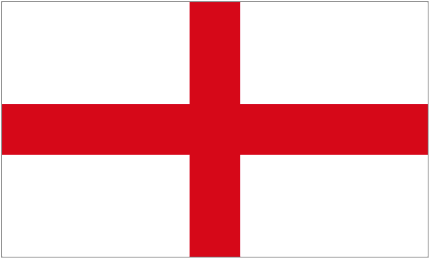 Early 1990's - E. F. Schumacher Forest Garden, Dartington Estate, Totnes, Devon, England (UK). "Perhaps one of the important examples of perennial agriculture, and a demonstration that this is a viable and productive method of food production in the cool temeprate climate of Britain." Early 1990's - E. F. Schumacher Forest Garden, Dartington Estate, Totnes, Devon, England (UK). "Perhaps one of the important examples of perennial agriculture, and a demonstration that this is a viable and productive method of food production in the cool temeprate climate of Britain."
|
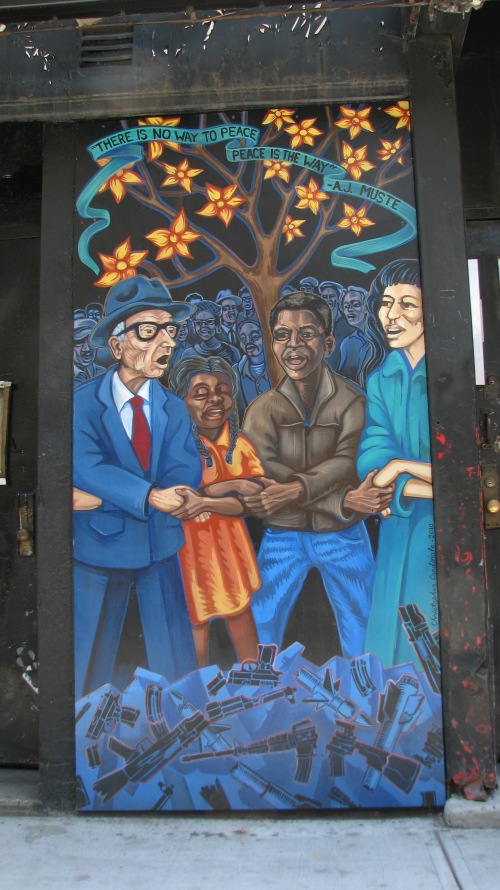 
 |   August 9, 2012 -
A. J. Muste Peace Mural, Peace Pentagon, 339 Lafayette Street, New York City, New York (USA).
"By Sachio Ko-yin*One Painter. One pacifist folk hero.....by artist Christopher Cardinale. A.J. Muste [1885-1967], was an organizer & writer for peace & social justice, who began his career as a minister. He left behind a rich legacy of labor, civil rights & anti-war organizing. His famous saying, “There is no way to peace. Peace is the Way” appears at the top of the painting.
Christopher Cardinale is a Brooklyn-based comic book artist & muralist, whose large scale mural projects have appeared in New York, New Mexico, Greece, Italy & Mexico. He also works with World War 3 Illustrated, the long-running political comic magazine...
The "peace pentagon" is the home of several activist groups, most prominently the historic War Resisters League [WRL], a secular pacifist organization founded in 1923." August 9, 2012 -
A. J. Muste Peace Mural, Peace Pentagon, 339 Lafayette Street, New York City, New York (USA).
"By Sachio Ko-yin*One Painter. One pacifist folk hero.....by artist Christopher Cardinale. A.J. Muste [1885-1967], was an organizer & writer for peace & social justice, who began his career as a minister. He left behind a rich legacy of labor, civil rights & anti-war organizing. His famous saying, “There is no way to peace. Peace is the Way” appears at the top of the painting.
Christopher Cardinale is a Brooklyn-based comic book artist & muralist, whose large scale mural projects have appeared in New York, New Mexico, Greece, Italy & Mexico. He also works with World War 3 Illustrated, the long-running political comic magazine...
The "peace pentagon" is the home of several activist groups, most prominently the historic War Resisters League [WRL], a secular pacifist organization founded in 1923."
|
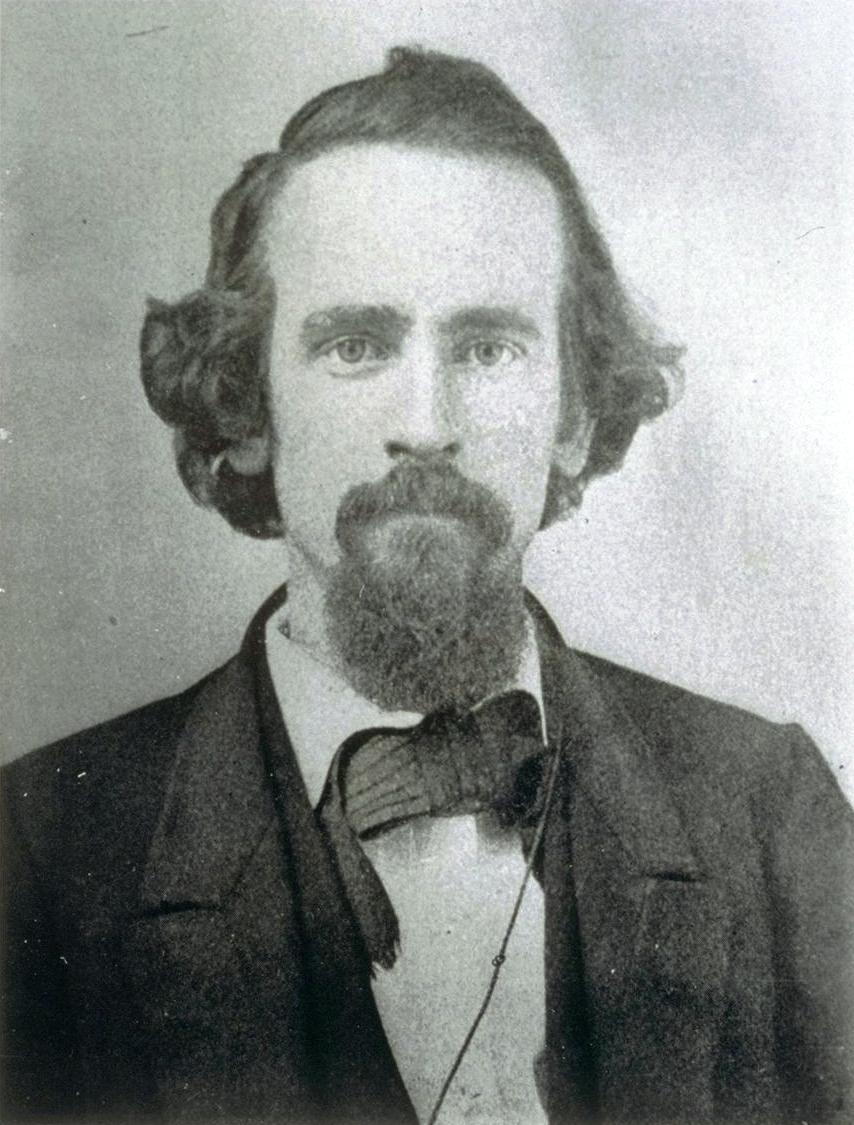


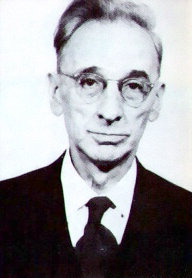







September 2, 1839 - Birth of Henry George, 413 South 10th Street, Philadelphia, Pennsylvania (USA). Birthplace is now the Henry George School of Social Science. When restored?
August 5, 1854 - Birth of Bolton Hall [1854-1938] in Ireland.

December 28, 1859 - Birth of Frank Stephens [1859-1935] in Rahway, New Jersey (USA).

June 20, 1878 - Birth of Arthur Ernest Morgan [1878-1975] near Cincinatti, Ohio (USA).

1884 - Birth of Clarence E. Pickett [1884-1965] in Kansas (USA).
January 8, 1885 - Birth of A. J. Muste [1885-1967] in Zierikzee, Zeeland (Netherlands).

1886 - Birth of Ralph Borsodi [1886-1977] in New York City, New York (USA).
Late 1886 - Topolobampo Cooperative Colony, Topolobampo Bay, near Los Mochis, Sinaloa (Mexico). Founded by Albert Kimsey Owen [1847-1916] & a group of American colonists inspired by Henry George. "Owen arranged to purchase 111,000 acres from a local hacienda owner, & -- with the help of Mexican president Porfirio Diaz -- obtained concessions for a railroad & for the colony. He then chartered a corporation, Credit Foncier, in New Jersey. People buying Credit Foncier stock received the right to join the colony, which was to be run communally & without the use of money. Work was assigned according to each person's ability, with credits awarded for labor. Individual accumulation of wealth was prohibited. Eight hours of work, eight hours of sleep & eight hours of culture or entertainment made up the daily routine. Colonists would build, own & operate the railroad, telegraphs, banks & water supply. Capital gained would be reinvested in the colony's infrastructure. Credit Foncier clubs sprang up in the USA & Europe. In late 1886, the first 27 colonists arrived from California, & within a short time the population grew to 2,000."


1894 - Fairhope, Alabama (USA). "Single tax colony" founded according to Georgist principles. Right image shows fountain at the municipal pier, behind which (not shown) is a monument to the single tax idea of Henry George. Click here for Wikipedia article.

1899 - Fairhope Public Libary, Fairhope, Alabama (USA. As the Topolobampo colony declined, Mrs. Marie Stephens Case Howland transfered her library from Topolobampo to Fairhope.


October 29, 1897 - Death of Henry George, New York City, New York (USA). "An estimated 100,000 people (more people than at any other funeral in US history except for that of President Abraham Lincoln) attended his funeral on Sunday, October 30, 1897, where the Reverend Lyman Abbott delivered an address." Buried in Green-Wood Cemetery, Brooklyn, New York City, New York (USA).


Date? - "Ghost Sign" for Henry George Brand Cigars, Main Street (north side), Mt. Pleasant, Utah (USA). Above the "Center of Utah" plaque.


January 5, 1900 - Birth of Mildred Jansen [1900-1992] on a farm near Blair, Nebraska (USA). Married John Loomis in 1940. He died in 1968.


1900 - Arden Communities, Arden, Ardencroft & Ardentown, New Castle County, Delaware (USA). Georgist community. "Fouunded by sculptor Frank Stephens [1859-1935] and architect Will Price [1861-1916], based on ideas such as Henry George's single tax, William Morris’s Arts and Crafts movement, and Peter Kropotkin's communal living principles." Now three legally separate municipalities. The name "Arden" is from Shakespeare, and Arden still supports a Shakespeare Gild. Subsequent home of a number of famous artists and peacemakers, e.g. Scott Nearing, Upton Sinclair and Ella Reeve Bloor. Click here for Wikipedia article.




1907 - Marietta Johnson School of Organic Education, Fairhope, Alabama (USA). Founded by Marietta Johnson [1864-1938] who "achieved a worldwide recognition as a leader in the Progressive Education movement." Attended by Ernest Morgan (son of Arthur Morgan). One of the school buildings is now the Marietta Johnson Museum. Statue of Johnson and two school children is on Fairhope waterfront.





1910 - Free Acres Community, Berkeley Heights, New Jersey (USA). Single-tax community 30 miles west of New York City. Founded on principles of Henry George by Bolton Hall [1854-1938], originator of the back-to-the-land movement. Upper left image is old postcard showing entrance to Free Acres. Upper right image is map drawn in 1939. Lower left image is earliest known photo of the Farm House (from an article by Hall in a 1911 issue of "The Independent." During the 1930's, the entire building was raised several feet, and the basement with its increased headroom became "Frank Stephens Hall" where meetings & parties take place. Lower right image shows the Farm House today. The upper part is mostly vacant & used for records storage, although the room which housed the original Children's' Library is still intact. /// Frank Stephens [1859–1953] was an American sculptor, political activist & co-founder of the utopian single-tax community in Arden, Delaware (qv).
August 16, 1911 - Birth of E. F. Schumacher [1911-1977] in Bonn (Germany).



1914 - Miami Conservancy District (MCD), Dayton, Ohio (USA). Created by engineer Arthur Morgan [1878-1975] to protect the city and the surrounding area after the disasterous Great Dayton Flood of 1913. During the construction of five MCD dams, Morgan organized model workers communities. Left image show sign at the entrance to the Englewood reserve. It explains the history of the Englewood Dam which was constructed by the Miami Conservancy District in 1922.

March 1918 - Birth of Robert Swann [1918-2003] Cleveland Heights, Ohio (USA).

1924 - Dogwoods Homestead, Suffern, New York (USA). Replaced "Seven Acres," Borsodi's first family "homestead." Ralph Borsodi [1886-1977]: "In 1924 we bought 18 acres-which we named Dogwoods after the beautiful trees on the land-and developed it into an even more satisfying place to live. I built quite a formidable home and three other buildings there from the natural rocks we found on the property." Borsodi sold Dogwoods to anarchist Lawrence (Larry) Labadie [1898-1975] who lived on the grounds from 1950 until his death in 1975.






1926 - Antioch Book Plate Company, Yellow Springs, Ohio (USA). Founded by Arthur Morgan's son Ernest Morgan and Walter Kahoe while both were students at Antioch College.





1929 - Glen Helen Ecology Institute, Antioch College, Yellow Springs, Ohio (USA). "Arthur Morgan (president of Antioch College 1920-1936) and his wife Lucy Griscom Morgan cultivate Hugh Taylor Birch [1848-1943], who achieved great wealth working for Standard Oil. Birch's favorite memory of Yellow Springs was his time spent in the Glen, and consequently he buys it all, donating it to the College in memory of his daughter Helen."



1930 - Pendle Hill, 338 Plush Mill Road, Wallingford, Pennsylvania (USA). "A Quaker center for spiritual growth, study and service. At Pendle Hill, students and staff live, work, worship and study together. First director was Henry Theodore Hodgkin [1876-1933] who founded the Fellowship of Reconcilation (FOR) in 1914 in UK and in 1915 in US. Clarence Pickett and Homer Morris lived in houses on the Pendle Hill grounds. Pickett was general secretary of the American Friends Service Committee [1929-1950] and chief of "Stranded Mining and Industrial Populations" for the federal government [in the mid-1930's].

January 1933 - Liberty Homesteads, Dayton, Ohio (USA). "Ralph Borsodi was in charge of a homestead unit sponsored by the Dayton Council of Social Agencies [DCSA]... About four miles west of Dayton, 160 acres was acquired with farm buildings to be owned in common by the community and individual plots leased to homesteaders. It was Borsodi's plan to ring Dayton with such communities. Ten homes had been built by January of 1935, some of which had faulty construction. The project was terminated, and the land was sold." Elizabeth Nutting was secretary of the "Characer Building Section" of the DCSA. Mildred Loomis saw homesteaders vote against Borsodi to accept fenderal control. Click here for a detailed history.



1933 - Norris, Norris, Tennessee (USA). Built by the Tennessee Valley Authority (TVA) under Arthur Morgan as one of several model communities for TVA workers. The city and nearby TVA dam are named for George W. Norris [1861-1944], Senator from Nebraska. Norris now has a museum adjacent to the Norris Community Library. Arthur Morgan lived in Norris while his wife Lucy promoted pottery and other local crafts and he, David A. Lilienthal [1899-1981], and Harcourt A. Morgan (no relation) directed TVA from offices in nearby Knoxville, Tennessee.

April 1934 - Norvelt, Westmoreland County, Pennsylvania (USA). One of five "stranded communities" built by the federal Division of Subsistence Homesteads during the Great Depression. Text of historical marker: "Originally called 'Westmoreland Homesteads,' Norvelt was established April 13, 1934, by the federal government as part of a New Deal homestead project. With 250 homes, Norvelt provided housing, work, and a community environment to unemployed workers and their families during the Great Depression. It was renamed “Norvelt" in 1937 in honor of First Lady Eleanor Roosevelt and her interest in the project."




1934 - Cumberland Homesteads, Crossville (Tennessee). One of five "stranded communities" built by the federal Division of Subsistence Homesteads during the Great Depression. "New Deal Community built by the between 1934 and 1938." Houses designed by William Macy Stanton [1888-1969], the same Quaker architect from Philadelphia who worked previously for Arthur Morgan at Norris, Tennessee. Now has Homesteads Tower Museum and an original homestead home (at 2611 Pigeon Ridge Road) whch has been restored to its authentic 1930's condition..

June 23, 1935 - Bayard Lane Community, Suffren (New York). 16 family homesteads, on a 40 acre plot, founded by Ralph Borsodi and owned by the Independence Foundation Inc. of which Clarence Pickett was a trustee. Click here for Wikipedia article. Home of missionaries Ralph P. Templin [1913-1994] and Paul Keene [1910-2005] after they were expelled from British India for working too closely with Gandhi. A Bayard Lane historical marker exists but is not shown here.

1936 - School of Living (SoL), Bayard Lane Community, Suffern, New York (USA). Occupied a 4-acre tract at Bayard Lane. Home of organic gardening in the United States. Later moved to Ohio under Mildred Loomis, then to Pennsylvania. Today SoL is an association of five land trust communities in Pensylvania, Maryland & Virginia. SoL publishes the journal Green Revolution.

November 8, 1991 - Penn Craft Community, Fayette County (Pennsylvania). Founded by the American Friends Service Committee (AFSC) under Clarence Pickett and Homer Morris. Text of marker: "This experimental community for coal miners unemployed during the Depression was developed, 1937-43, by the American Friends Service Committee (AFSC). On the 200-acre tract, fifty families built their stone houses, a cooperative store, and a knitting factory. A model for other self-help projects elsewhere, Penn-Craft was a successful example of the back-to-the-land movement of the 1930s."





October 10, 1987 - Van Houten Fields Historical marker, West Nyack, near Suffern, Rockland County (New York). Text of Marker: "In 1937 Ralph Borsodi, author, economist, and philosopher, organized a group for the purchase of this 106 acre Dutch farm to be divided into leased acreage plots. This became the largest self-administered back-to-the-land community in Rockland county for people seeking a do-it-yourself agrarian life style. The homesteads were built in part by the owners. The leased land later reverted to private ownership." Click here for history of Borsodi's School of Living (SOL).


1937 - Celo Community, 7965 White Oak Road, Burnsville (North Carolina). Founded by Arthur Morgan, Clarence Pickett & Henry Regnery [1912-1996]. Arthur Morgan visited conscientious objector camps during World War II, after which several CO's moved to Celo & created a Friends Meeting House on the grounds. Image is Celo Co-op building on cover of "Experimental Americans: Celo & Utopian Community in the Twentieth Century" by George L. Hicks.




1940 - Bryn Gweled Homesteads, Southampton, Bucks County, Pennsylvania (USA). Intentional community founded with assistance of Ralph Borsodi. "Bryn Gweled" means "Hill of Vision" in Welsh, a reference to Pendle Hill where Quaker founder George Fox [1624-1669] had a vision in 1652. Name suggestred by Bryn Gweled member John Pease Hodgkin [1909-1994], son of Henry Theodore Hodgkin.

About 1947 - Tanguy Homesteads, Twin Pine Way, Glen Mills, Delaware County, Pennlysvania (USA). Sister community of Bryn Gweled Homesteads (qv). Organized by Mary Ellicott Arnold [1876-1968]. Has about 30 "homesteads."



1940 - Community Service Inc. (CSI), Yellow Springs (Ohio). Now called "The Community Solution." Founded by Arthur Morgan who presided over a CSI meeting attended by Pendle Hill, Celo, Bryn Grwled and other communities in 1948 at which the phrase "intentional community" was coined, leading to the creation of the Fellowship of Intentional Community (FIC), the Homer Morris Loan Fund, and the Community Educational Service Council, Inc.(CESCI).

March 1946 - Walnut Acres, Penns Creek (Pennsylvania). Organic farm founded by Paul Keene [1910-2005] & his wife Betty after working at Ralph Borsodi's School of Living in Suffren, NY. /// Now a corporatre brand with the following "who we are" on its website: " Walnut Acres is America's first organic food company. We've been producing delicious organic foods since 1946. True to our beginnings, we make organic foods & beverages that nourish your body and invigorate your soul. We understand that despite the hectic pace of life you are committed to healthy living & enjoyment of delicious food. So we continue to create tasty & convenient organic foods & strive to make them available wherever you chose to shop." Click here for an obituary of Paul Keene.



1947 - Historical Marker, Philadelphia, Pennsylvania (USA). Honors the American Friends Service Committee (AFSC) under Clarence Pickett [1884-1965] for receiving the 1947 Nobel Peace Prize (with the British Friends Service Council) for relief work in Europe during World War II. (Date of marker is unknown.)

1947 - Parkwyn Village, Kalamazoo, Michigan (USA). Cluster of "Usonian" homes designed by Frank Lloyd Wright. Robert Swann [1918-2003] worked on the project as a laborer (after being a conscientious objector during World War II). Click here for Swann's autobiography.

c.1948 - Melbourne Village, Brevard County, Florida (USA). Modeled by Ralph Borsodi, Dr. Elizabeth Nutting, Margaret Hutchinson and Virginia Wood on Liberty Acres [sic], their previous project in Dayton, Ohio. Developed by the American Homesteading Foundation (AHF), an Ohio corporation. Borsodi operated a School of Living here from 1948 to 1952 and the "University of Melbourne" from 1955 to 1958. The latter is now part of the Florida Institute of Technology (FIT) near the Kennedy Space Center.

July 1948 - Peacemakers, Chicago?, Illinois (USA). "An American pacifist organization. The name of the group was taken from a section of the Bible, the Beatitudes or Sermon on the Mount: 'Blessed are the peacemakers, for they will be called children of God.' The group was founded following a conference on 'More Disciplined and Revolutionary Pacifist Activity' in Chicago in July 1948 to advocate nonviolent resistance in the service of peace, particularly draft resistance and tax resistance. The group’s members vowed: (1) to refuse to serve in the armed forces in either peace or war; (2) to refuse to make or transport weapons of war; (3) to refuse to be conscripted or to register; (4) to consider to refuse to pay taxes for war purposes — a position already adopted by some; (5) to spread the idea of peacemaking and to develop non-violent methods of opposing war through various forms of non-cooperation and to advocate unilateral disarmament and economic democracy. The group was organized largely by Ernest & Marion Bromley and Juanita & Wally Nelson. Among the organization’s other founders were A.J. Muste, Dwight Macdonald, Ralph T. Templin, Roy Kepler, Cecil Hinshaw, Milton Mayer, Bayard Rustin and Horace Champney. Many members came from the Committee for Nonviolent Revolution [CNRV], which had been formed two years before. The 'Tax Refusal Committee' of Peacemakers is credited for founding the modern American war tax resistance movement. Peacemakers published the first guide to war tax resistance in 1963. Peacemakers differed from other pacifist and nonviolent resistance organizations in its emphasis on small-scale, local, 'cell;-based organization & intentional communities."


1950 - The Vale Community, Yellow Springs, Ohio (USA). 20-acre intentional community founded by Arthur Morgan's son Griscom and his wife Jane Moore Morgan [1918-2007]. "Began in 1946 when Jane & Griscom Morgan invited a family to share their home on 40 acres of land two miles south of Yellow Springs. In 1950 the second house was built and more followed. Now there are 11 homes & 20 members. The group incorporated as The Vale in 1960. Gris & Jane felt strongly that land should be shared, and not used as a commodity, so in 1980 they donated the land to the Community Service, Inc. Land Trust, from which it is leased by The Vale. Seventeen of its wooded acres were put into a conservation easement, so they would never be built upon."


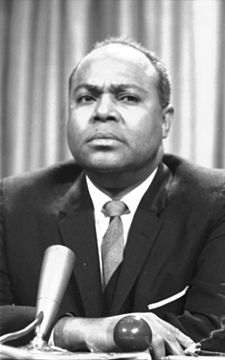


1954 - Concord Park, Feasterville-Trevose, Belsalem Township, Bucks County, Pensylvania (USA). "America's first community designed for integration." 139 ranch houses constructed by Morris Milgram [1916-1997] assisted by Robert Swann [1918-2003]. In 1975, Morris Milgram & James Farmer [1920-1999] founded the Fund for an OPEN Society. Images show Milgram left, Swann center & Farmer right. One of the Fund's offices is at Bryn Gweled Homesteads.




April 29, 1962 - White House, Washigton, DC (USA). On the same day, Clarence E. Pickett and his wife Lilly protest outside the White House against the nuclear arms race and are received inside the White House at a reception for all Nobel Prize winners from the US and Canada.. The American Friends Service Committee's Nobel medal is presumably on permanent display at AFSC headquarters in Philadelphia, Pennsylvania.




1962 - Arthur Morgan School (AMS), Celo Community, 60 AMS Circle, Burnsville, North Carolina (USA). Founded by Elizabeth Morgan (wife of Ernest Morgan). "Her chief models were Maria Montessori [1870-1952], Gandhi and the innovative American educator and activist Arthur Morgan. She also was influenced by N.S.F. Grundtvig [1783-1872], considered to be the father of the Danish folk school movement, and the innovative Swiss educator Johann Pestalozzi [1746-1827], whose methods balanced three elements: hands, heart and head."




1962 - "Everyman," Sausalito, California (USA). "In 1962 the US announced another round of nuclear tests in the Pacific. We decided to build a 30-foot trimaran sailboat designed by Arthur Piver [1910-1968] and sail it into the testing zone. The US Attorney in San Francisco decided to try to stop us by issuing a 'cease and desist' order. The "Everyman" sailed serenely out under the Bay Bridge [sic] and into ocean waters with a crew of three. Following the boat was a Coast Guard cutter with a US Marshall. Hovering above it all were several helicopters, also with reporters and photographers. All of this was being carried on local radio and TV news so that practically everyone in the San Francisco area was aware of the story. Eventually, with the help of the Coast Guard, he managed to arrest and handcuff the crew and return them to San Francisco. I was also arrested and spent the night in the San Francisco jail [sic] along with the sailors. Meanwhile, the word had gone out. Hundreds of supporters arrived at the Federal courthouse where we were being held. They filled the entire building before closing time, refusing to leave when ordered to do so. We turned our night in jail into a party. Joan Baez lead the singing and we danced all night long. The next day the Feds dropped the case against me but charged the three sailors, who spent a couple of months in jail." (Image shows Arthur Piver's 30-foot "Nimble" built in 1969 in the UK. Piver left Sausalito alone in his 36-foot trimaran on March 17, 1968, en route to San Diego and was never seen again.)



1967 - New Communities, Albany, Georgia (USA). First community land trust (CLT) in the United States. An attempt by Ralph Borsodi and Robert Swann to "assist some 500 African-American families to resettle a 5000 acre tract on a lease-hold, trust holding, common possession pattern." "Inspired by Borsodi's work with J. P. Narayan [1902-1979] and Vinoba Bhave [1895-1982], both disciples of Gandhi."




1967 - Heathcote Community, Freeland (Maryland). Historically associated with Mildred Loomis [1900-1992] who had worked with Ralph Borsodi in New York and Ohio. Now one of five land trust communities which comprize the School of Living (SoL). Image shows Loomis reading Green Revolution, the SoL's quarterly journal.


1969 - A. J. Muste Conference Center, Voluntown Peace Trust (VPT), 539 Beach Pond Road, Voluntown, Connecticut (USA), "Built by the New England Committee for Nonviolent Action (NECNVA). Features a large meeting hall, industrial kitchen, accessible bathroom, covered outdoor porch, and the historic Eugene V. Debs Memorial Library." VPT & NENVA were created by Robert Swann [1918-2003] and his wife Marjorie. Swann also creaed the Institute for Community Economics (ICE) and the E. F. Schumacher Society.


1973 - Institute for Community Economics (ICE), 1101 30th Street, NW (Suite 400), Washington, DC (USA). Founded by Robert Swann. Promotes community land trusts (CLT's). Moved to Washington, DC, from Connecticut. Website says founded in 1967 (referring to New Communities?).


1975 - Morgan Stone, Glen Helen, Antioch College, Yellow Springs, Ohio (USA). Where Arthur and Lucy Morgan's ashes are enterred.




1978 - Peace Pentagon (Muste Building), A.J. Muste Memorial Institute, 339 Lafayette Street, New York City, New York (USA). Organized in 1974 to carry forward the commitment of A. J. Muste [1885-1967] to nonviolent radical change, the institute bought the "Peace Pentagon" office building in 1978 to provide a stable and affordable base for itself and other activist groups in New York City, e.g. the War Resisters League (WRL). Now in need of major repairs and in danger of being sold. Click here for "Save the Peace Pentagon."


1990 - Library, E. F. Schumacher Society, South Egremont, Massachusetts (USA). A 11,000 volume collection of materials focusing on decentralism and exploring the viability of ecologically, economically, and socially responsible societies, built on the ideal of human scale. Contains the papers of E. F. Schumacher [1911-1977], British economist and author of Small is Beautiful. Library created by Robert Swann [1918-2003]. Swann also created the Voluntown Peace Trust (VPT) in Voluntown, CT (qv).


1991 - Stop, Look, and Listen, A. J. Muste Alcove, Van Wylan Library (2nd floor), Hope College, Holland, Michigan (USA). "Named for Hope College alumnus and well-known peace activist A. J. Muste [1885-1967]. He spent his life working with Quakers and Communists, organized labor and radical peace activists, all in the name of non-violent solutions to the world's problems. The green sculpture pieces were created by a Hope graduate. They offer a graffiti-friendly way to express your thoughts and convictions." Entry #494 in the "Peace Movement Directory" by James Richard Bennett (2001).


Early 1990's - E. F. Schumacher Forest Garden, Dartington Estate, Totnes, Devon, England (UK). "Perhaps one of the important examples of perennial agriculture, and a demonstration that this is a viable and productive method of food production in the cool temeprate climate of Britain."


August 9, 2012 - A. J. Muste Peace Mural, Peace Pentagon, 339 Lafayette Street, New York City, New York (USA). "By Sachio Ko-yin*One Painter. One pacifist folk hero.....by artist Christopher Cardinale. A.J. Muste [1885-1967], was an organizer & writer for peace & social justice, who began his career as a minister. He left behind a rich legacy of labor, civil rights & anti-war organizing. His famous saying, “There is no way to peace. Peace is the Way” appears at the top of the painting. Christopher Cardinale is a Brooklyn-based comic book artist & muralist, whose large scale mural projects have appeared in New York, New Mexico, Greece, Italy & Mexico. He also works with World War 3 Illustrated, the long-running political comic magazine... The "peace pentagon" is the home of several activist groups, most prominently the historic War Resisters League [WRL], a secular pacifist organization founded in 1923."















